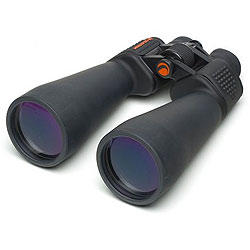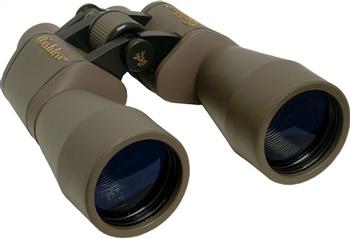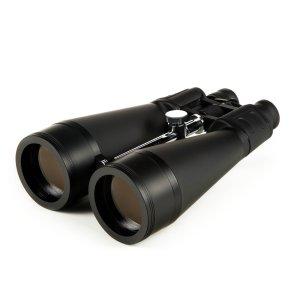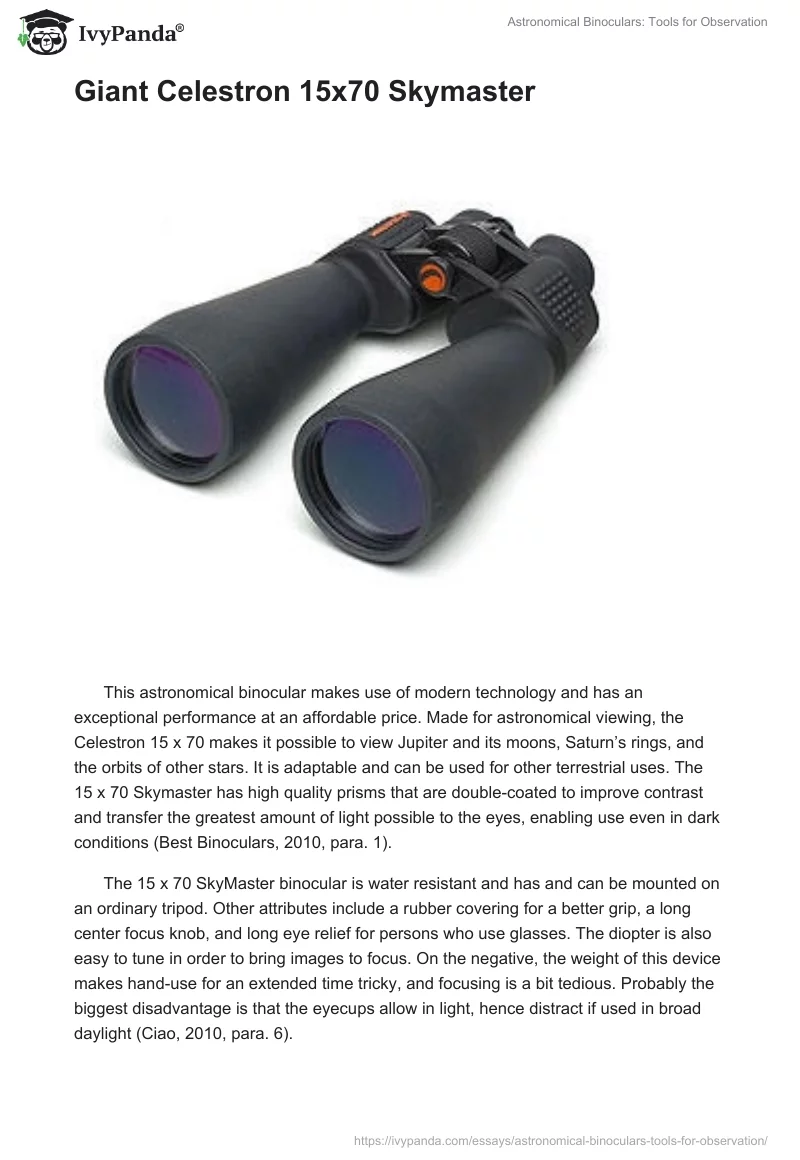Comparison of three Astronomical Binoculars
Giant Celestron 15×70 Skymaster

This astronomical binocular makes use of modern technology and has an exceptional performance at an affordable price. Made for astronomical viewing, the Celestron 15 x 70 makes it possible to view Jupiter and its moons, Saturn’s rings, and the orbits of other stars. It is adaptable and can be used for other terrestrial uses. The 15 x 70 Skymaster has high quality prisms that are double-coated to improve contrast and transfer the greatest amount of light possible to the eyes, enabling use even in dark conditions (Best Binoculars, 2010, para. 1).
The 15 x 70 SkyMaster binocular is water resistant and has and can be mounted on an ordinary tripod. Other attributes include a rubber covering for a better grip, a long center focus knob, and long eye relief for persons who use glasses. The diopter is also easy to tune in order to bring images to focus. On the negative, the weight of this device makes hand-use for an extended time tricky, and focusing is a bit tedious. Probably the biggest disadvantage is that the eyecups allow in light, hence distract if used in broad daylight (Ciao, 2010, para. 6).
Specifications
- Magnification: 15x
- Objective Lens Diameter: 70mm
- Exit Pupil: 4.7
- Eye Relief: 18mm
- Size: Giant Binoculars
- Weight: 1361g
- Field of View: 230ft at 1,000 yards
- Close Focus Distance: 9.9ft
- Image Stabilization: No
- Auto Focus: No (Best Binoculars, 2010, para. 6)
GALILEO 20×60 Astronomical Binoculars (C-2060)

The C-2060 boasts of a 60mm objective lens and moves images more than 20 times closer than the naked eye. Its prisms are arranged in a Porro prism fashion that gives them a higher sensitivity over other binocular models (Scopes, (No date), para. 2). Besides, the binocular has a completely coated optics that reduces glare. Other features of the C-2060 include water resistance, rubber covered for better handling, a complete range center focus and can be fitted to a standard tripod (Sportsman’s Guide, 2010, para. 2). However, the binocular ranks low on aspect and this reduces their usability on watching terrestrial objects (Optics Planet, 2010, para. 1).
Specifications
- Magnification: 20x
- Objective Lens Diameter: 60mm
- Exit Pupil: 3
- Eye Relief: 10mm
- Size: Small Binoculars
- Weight: 1088 g
- Field of View: 156ft at 1,000 yards
- Close Focus Distance: 30ft
- Image Stabilization: No
- Auto Focus: No
Zumell 20×80 SuperGiant Astronomical Binoculars

Zumell 20×80 Binoculars have excellent optics that are completely coated and with the precise diopter tuning, finer details can be seen (The Binocular Site, 2010, para. 1). The large 80 mm lens bring in just enough light and this makes it easier to view terrestrial objects even on a dark night. The center focus is easy to adjust, allowing one to make precise views (Softpedia, 2010, para. 2). The binoculars weigh almost 2000 g and this makes them difficult for extended hand use, when fitted to a tripod, viewing cannot be made past an angle of 75 degrees (Buzzilions, (No date), para. 1). A strong point for the Zhummel binocular is their very large field of view that increases clarity of images.
Specifications
- Magnification: 20x
- Objective Lens Diameter: 80mm
- Exit Pupil: 4
- Eye Relief: 17mm
- Size: Giant Binoculars
- Weight: 2000g
- Field of View: 168ft at 1,000 yards
- Close Focus Distance: 70ft
- Image Stabilization: No
- Auto Focus: No
Conclusion
Among the three astronomical binoculars, the one that gives the best performance with regards to price is GALILEO 20×60 Astronomical Binoculars (C-2060). The Zhummel model gives finer images and with a wide field of view but is heavy and when fitted to a tripod, cannot be used at an angle greater than 75 degrees. The price is also high.
Reference List
Best Binoculars. (2010). Giant Celestron 15×70 Skymaster. Web.
Buzzilions. (No date). Zumell 20×80 SuperGiant Astronomical Binoculars Package. Web.
Ciao, (2010). Celestron Skymaster 15×70 *71009*. Web.
Optics Planet. (2010). Reviews – Galileo 20×60 mm Astro Binoculars C-2060 Reviews –GO-BI-C2060. Web.
Scopes. (No date). GALILEO 20×60 Astronomical Binoculars (C-2060). Web.
Softpedia. (2010). Zumell 20×80 SuperGiant Astronomical Binoculars. Web.
Sportsman’s Guide. (2010). The Sky’s the Limit with the Galileo C2060 Astronomical Binoculars. Web.
The Binocular Site. (2010). Zumell 20×80 SuperGiant Astronomical Binoculars. Web.



